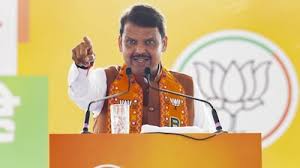Decode Politics: Why ‘Hindi imposition’ row is back again in Maharashtra

Language plays a powerful role in shaping identity. In Maharashtra, Marathi isn’t just a means of communication—it’s a symbol of pride and cultural belonging. That’s why any attempt to introduce Hindi more aggressively sparks public resistance. Recently, a new policy on language in schools triggered renewed concerns about “Hindi imposition.” Despite the government’s attempts to ease fears, the issue remains hotly debated. What’s really happening—and why is it causing such a stir?
What Triggered the Controversy?
On April 16, 2024, the Maharashtra government issued a resolution in line with the National Education Policy (NEP) 2020. It stated that students from Classes 1 to 5 in Marathi and English medium schools would study a third language. While the resolution didn’t specifically name Hindi, schools interpreted the move as introducing Hindi by default.
Since Marathi and English are already taught, adding Hindi as the third language appeared like a top-down mandate. This raised immediate alarms among parents, educators, and political leaders across the state.
Public Response: A Fear of Losing Cultural Ground
Opposition parties and regional activists reacted strongly. They claimed the decision would weaken Marathi’s importance in daily life and in education. Leaders argued the move wasn’t just about education—it was about pushing Hindi into spaces where Marathi has always held ground.
Raj Thackeray, head of the Maharashtra Navnirman Sena (MNS), warned that the imposition of Hindi could cause cultural and political divisions. Congress leaders accused the BJP and RSS of using education as a tool to push their ideological agenda.
Government’s Attempt to Clarify
Faced with public outcry, the government released a follow-up statement in June. It clarified that Hindi was not compulsory. According to the updated guideline, Hindi would “generally” serve as the third language, but schools could offer other Indian languages if at least 20 students chose an alternative.
This clarification failed to resolve the concerns. Critics pointed out that most schools, especially in rural areas, would struggle to find 20 students interested in the same non-Hindi language. Without access to resources or enough demand, schools would have no option but to teach Hindi—making it mandatory in practice, if not in wording.
Why Many Still Call It ‘Imposition’
While the revised guideline softens the language, the structure remains the same. Hindi becomes the default unless schools meet specific conditions to teach a different language. That makes it difficult to offer real choice, especially in smaller schools.
Activists also note the lack of infrastructure for teaching other languages. Few schools have the staff or materials needed to offer Tamil, Telugu, Bengali, or other Indian languages. Even if students want alternatives, the system doesn’t make it easy to choose them.
Expert Opinions: Too Much, Too Early
Education experts have raised a separate but related concern: age-appropriateness. They argue that adding a third language in Class 1 contradicts established learning models. Traditionally, schools introduce the third language in Class 6. Pushing it into primary grades risks overwhelming children still learning basic reading and writing.
The National Curriculum Framework also recommends gradual language learning. The decision to introduce three languages from Class 1 ignores this guidance, experts say.
Political Reactions: A Battle of Ideologies
The policy’s timing and wording suggest more than just an educational shift. It highlights the ideological differences between the central BJP government and regional parties in Maharashtra.
While the BJP frames the policy as part of NEP 2020—a national reform effort—regional leaders see it as an attempt to centralize power through language. Shiv Sena (UBT), the NCP (Sharad Pawar’s faction), and Congress have all opposed the resolution. They argue the state should protect its linguistic identity rather than promote a uniform national language.
Maharashtra’s History of Language Activism
Maharashtra has long defended its linguistic identity. Protests have erupted over signage, job criteria, and public communication whenever Hindi has appeared to take precedence. Marathi is deeply embedded in the state’s culture, and residents have fought hard to protect its role.
This context explains the strong response to the recent policy. To many people, it’s not just about what children learn in school. It’s about preserving a language, a culture, and a sense of self in the face of growing uniformity.
What Needs to Change?
To resolve the issue, experts and educators suggest three key changes:
- Remove the 20-student minimum to offer non-Hindi languages. This would allow more schools to reflect local linguistic diversity.
- Delay the introduction of the third language until Class 6, reducing academic pressure on young learners.
- Invest in infrastructure for teaching other Indian languages—trained teachers, study materials, and digital resources.
These steps could offer students true choice while respecting local language pride.
Conclusion
The “Hindi imposition” row in Maharashtra is not just about one policy or classroom. It reflects the deeper conflict between national education goals and regional cultural identity. While the state says it supports choice, the current structure pushes schools toward Hindi by default. That’s why critics say the imposition hasn’t stopped—it’s just wearing a different mask.
For language policy to work in a diverse country like India, it must empower rather than prescribe. Giving children the freedom to learn in a way that respects their cultural roots is not just good education—it’s good governance.






